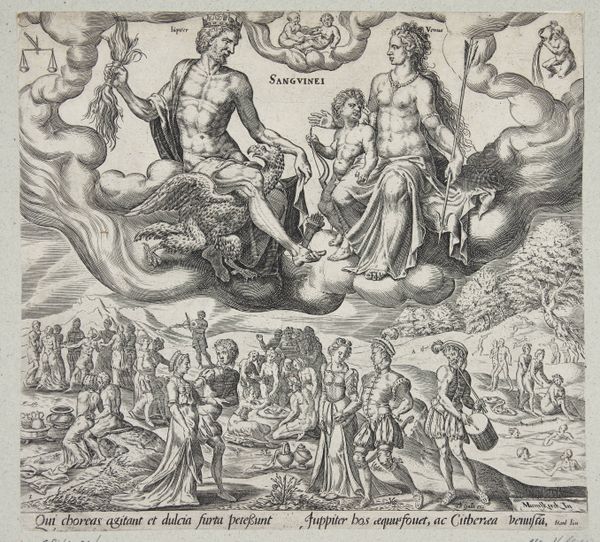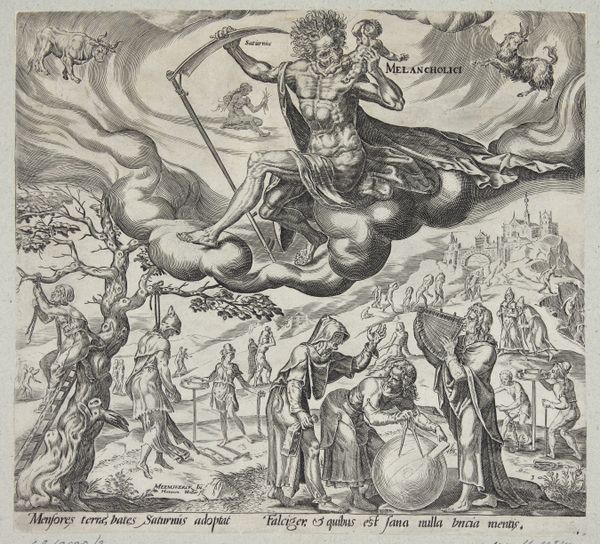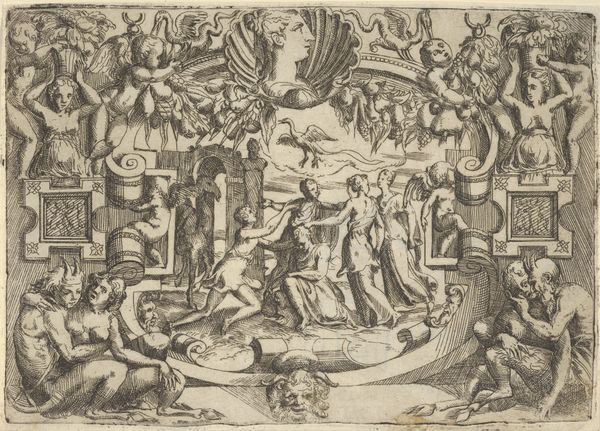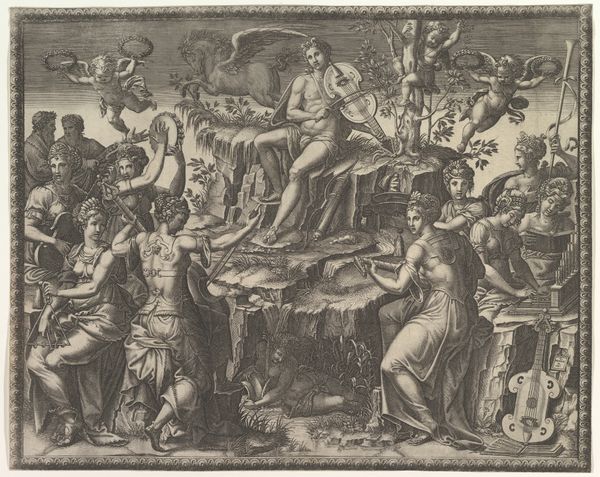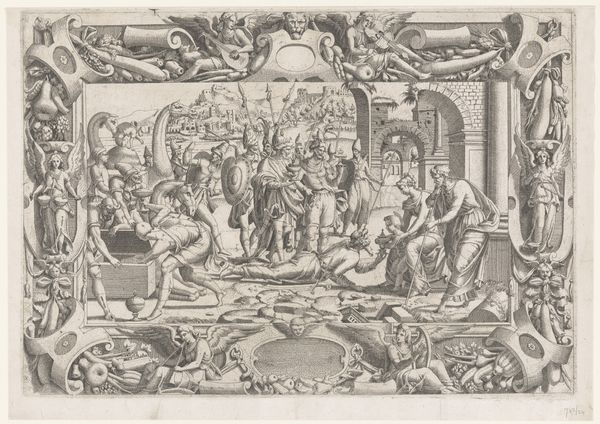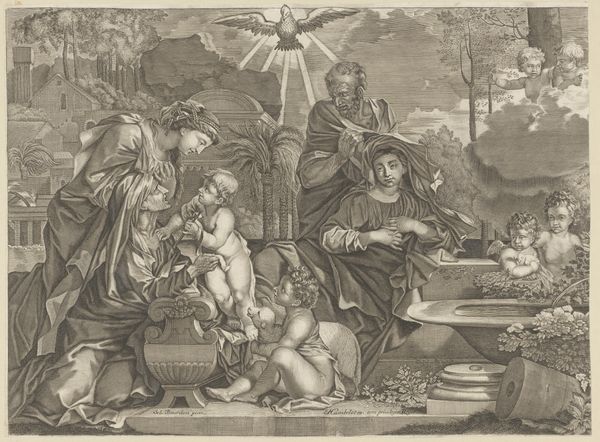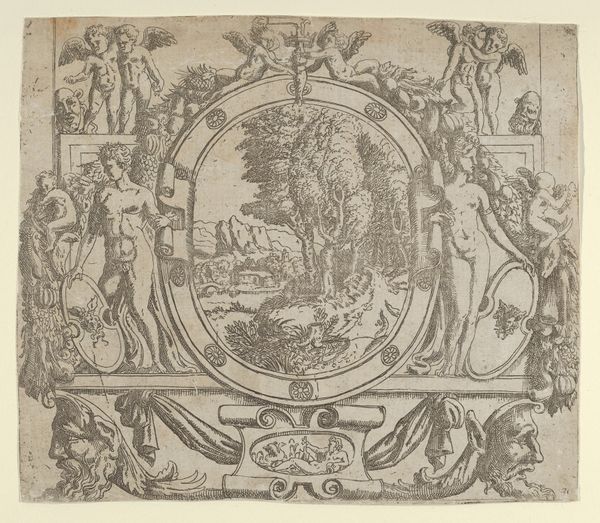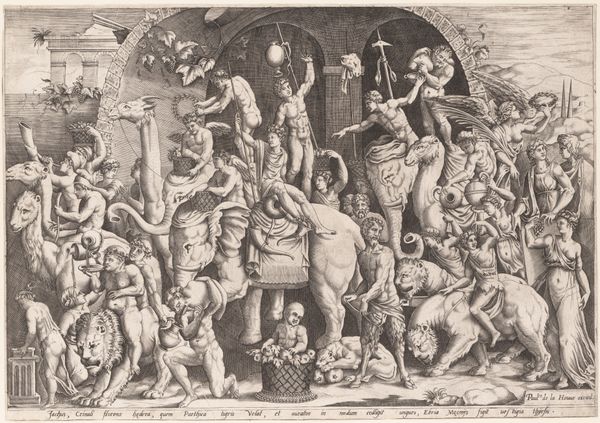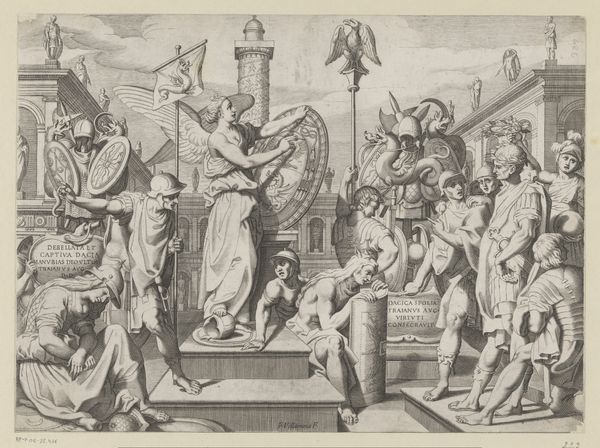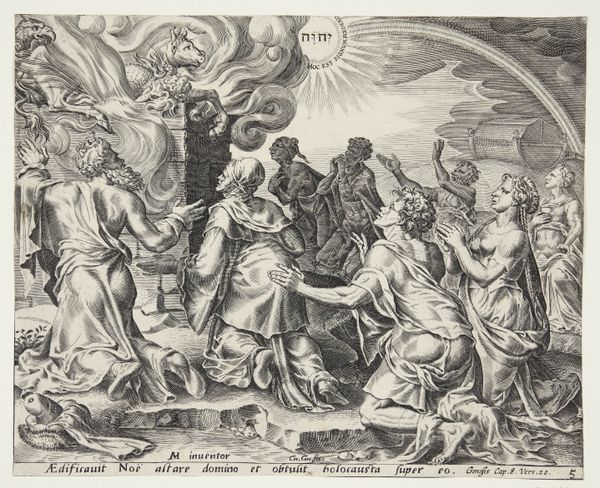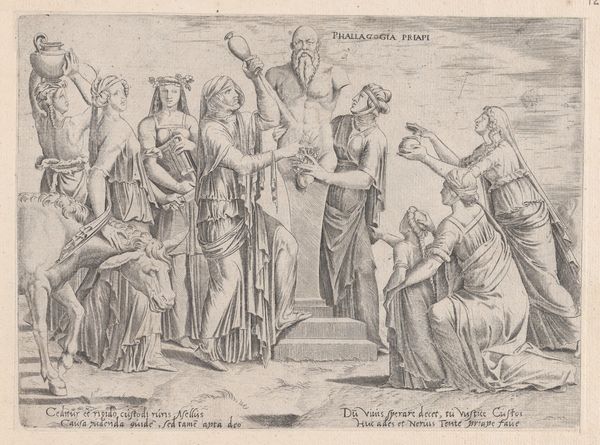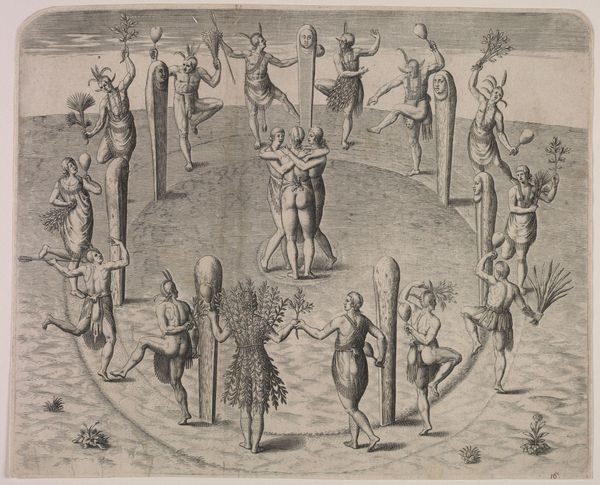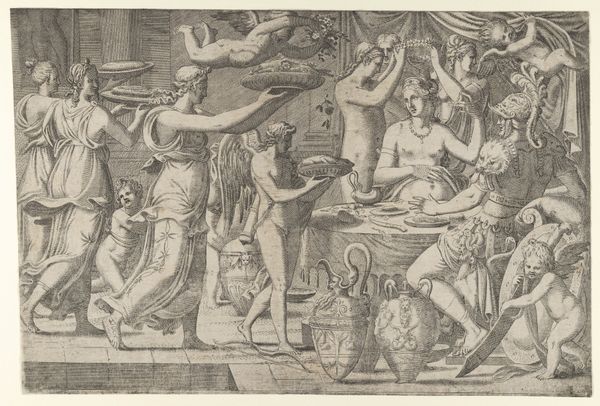
drawing, print, engraving
#
drawing
#
allegory
#
baroque
# print
#
landscape
#
figuration
#
history-painting
#
engraving
Dimensions: Sheet: 9 3/8 × 12 7/16 in. (23.8 × 31.6 cm)
Copyright: Public Domain
Curator: Here we have Matthaeus Greuter's "Allegory of a Cardinal," an engraving likely made sometime between 1566 and 1638. The print is currently held at the Metropolitan Museum of Art. What are your initial impressions? Editor: Utterly baroque! It’s like a fever dream on copperplate. I see angels peeing into a giant fountain… guarded by stone faces. Curator: Precisely! Notice how the allegorical scene unfolds with figures circling this grand fountain, drawing water? The fountain itself, adorned with cherubs and heraldic symbols, represents abundance and, potentially, the cardinal's power or virtues. Editor: So, it’s not just random water works. These ladies aren’t exactly doing chores; they’re personifications of something loftier. Is the whole thing a coded message? Like, only people 'in the know' at the time got the references? Curator: Most certainly. Allegories often functioned that way. The composition directs our eye from the putti above, signifying divine favor, down to the nymphs or goddesses below, emblems of earthly bounty and classical virtue, thus unifying celestial and terrestrial realms in praising a prince of the church. It speaks to the pervasive cultural symbolism that marked baroque society. Editor: The landscape fading in the background adds this dreamy touch to it. You know, beyond the blatant symbolism, there’s a sense of transience…water flows, power shifts, all that jazz. And the etching—there’s something almost melancholic about its details and precision. Curator: You pick up on something truly perceptive about its temporal feel! Engravings of the period frequently functioned as vehicles to propagate specific cultural ideals of power. Greuter presents a scene almost frozen in time. Yet its symbolic richness points to values constantly negotiated amid societal and historical forces. Editor: In the end, there’s beauty even amidst these complicated layers. The baroque artists, weren't they always trying to find an art to reconcile pleasure and pomp? Curator: A constant tightrope walk to elevate power, celebrate authority, with, indeed, what ultimately makes us human. Thanks to this exchange, the symbolic narrative becomes even more lucid. Editor: Couldn't have framed it better myself. This conversation definitely brought to the fore my original musings and helped see it more thoroughly now.
Comments
No comments
Be the first to comment and join the conversation on the ultimate creative platform.
